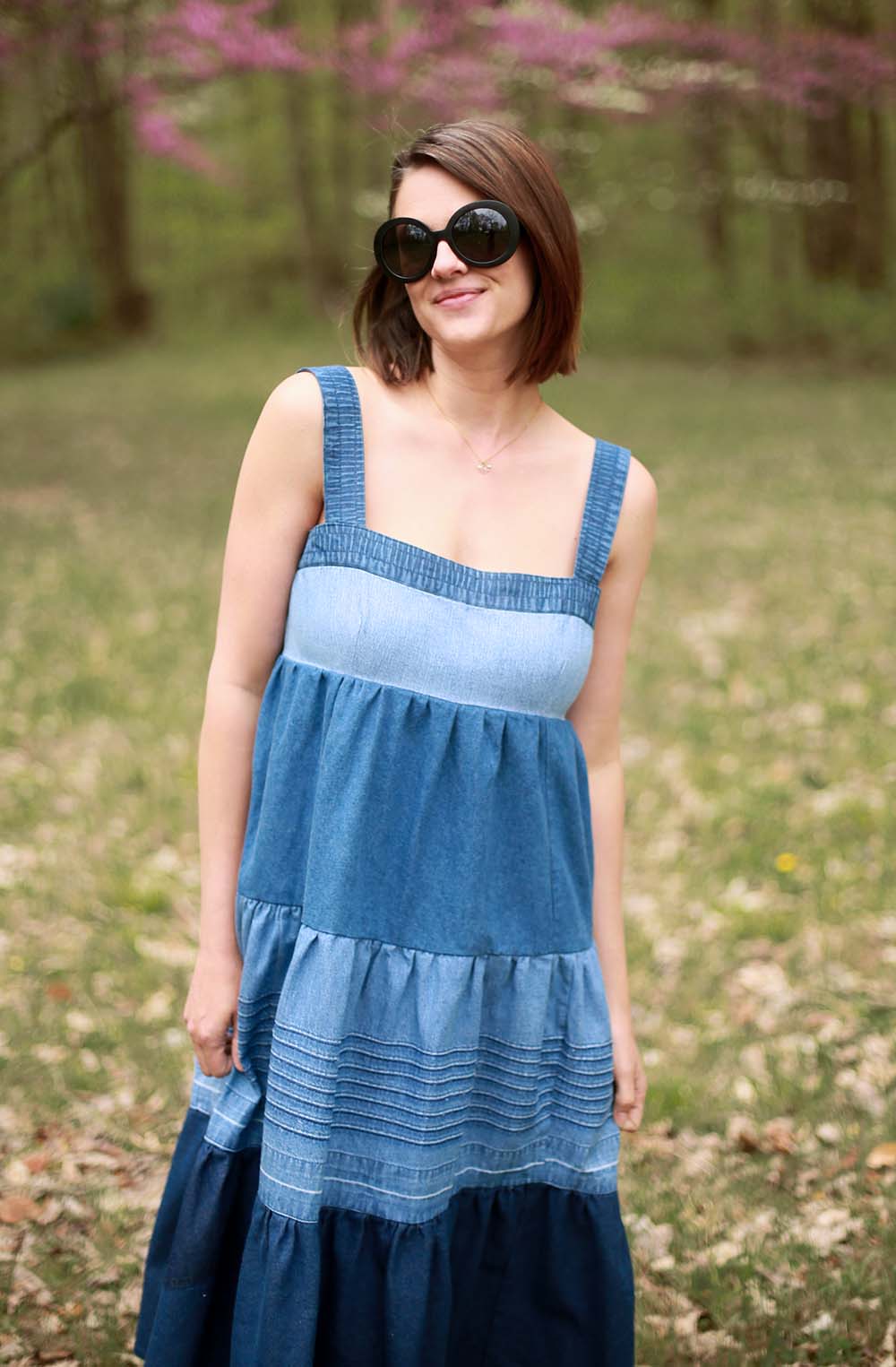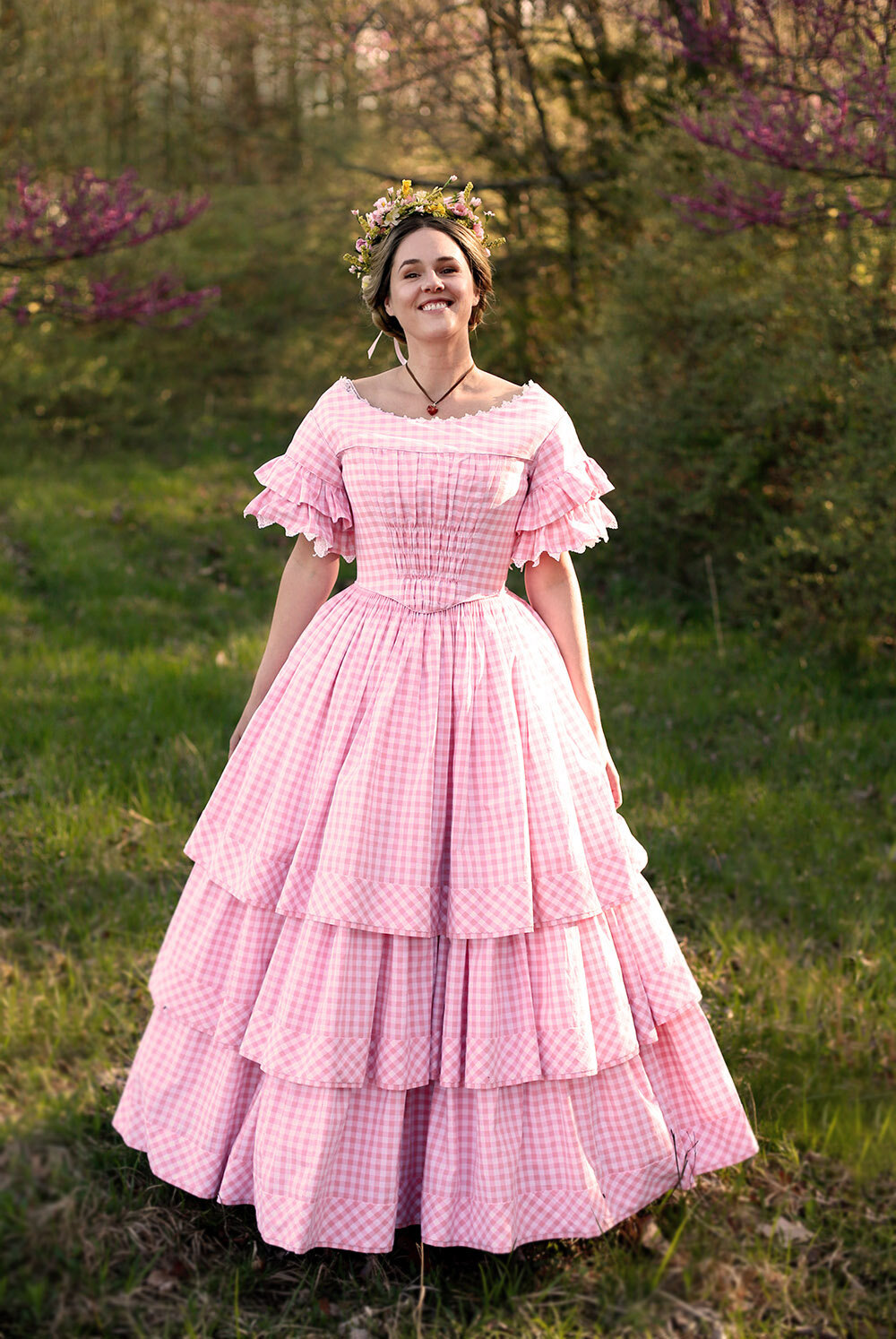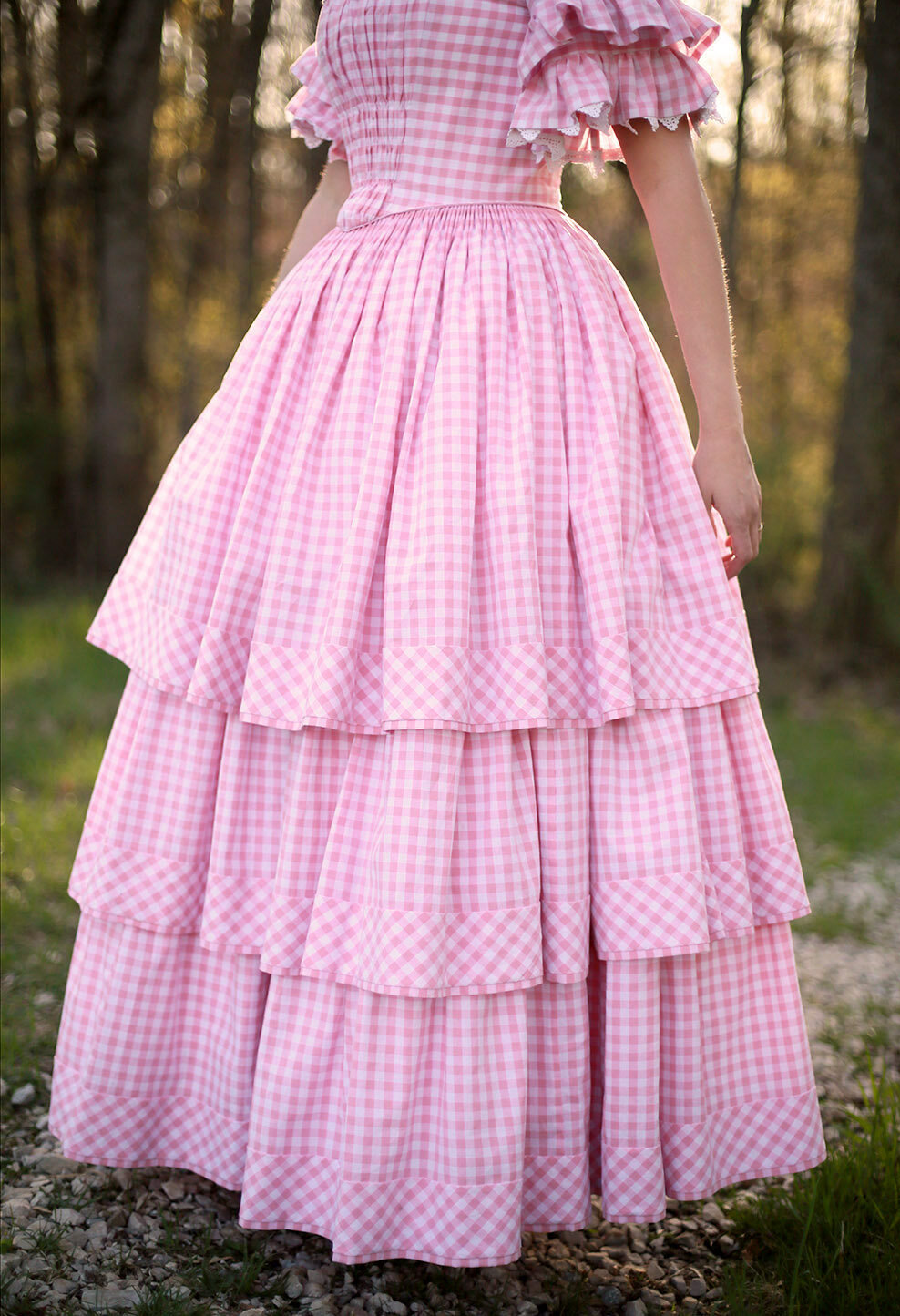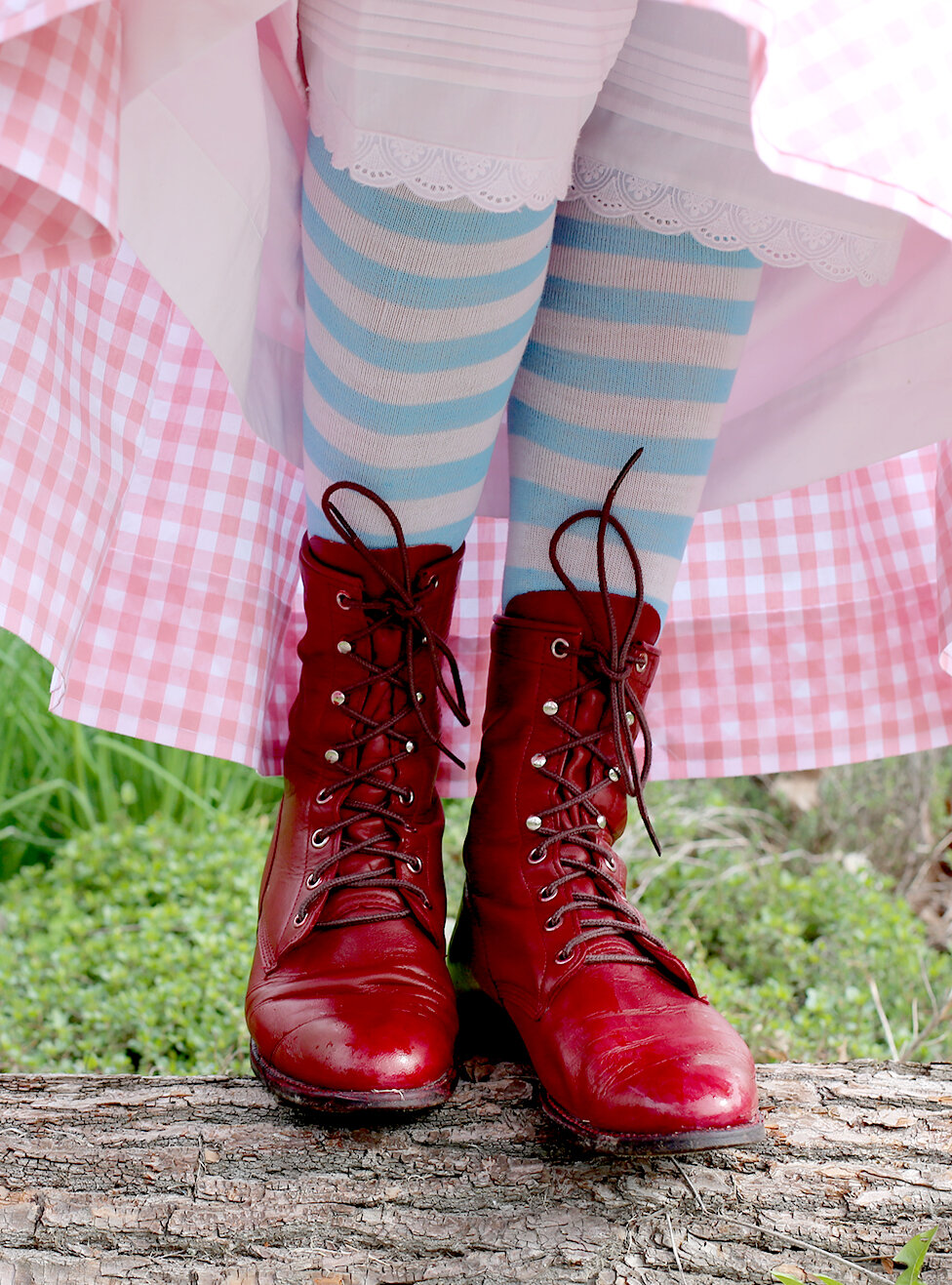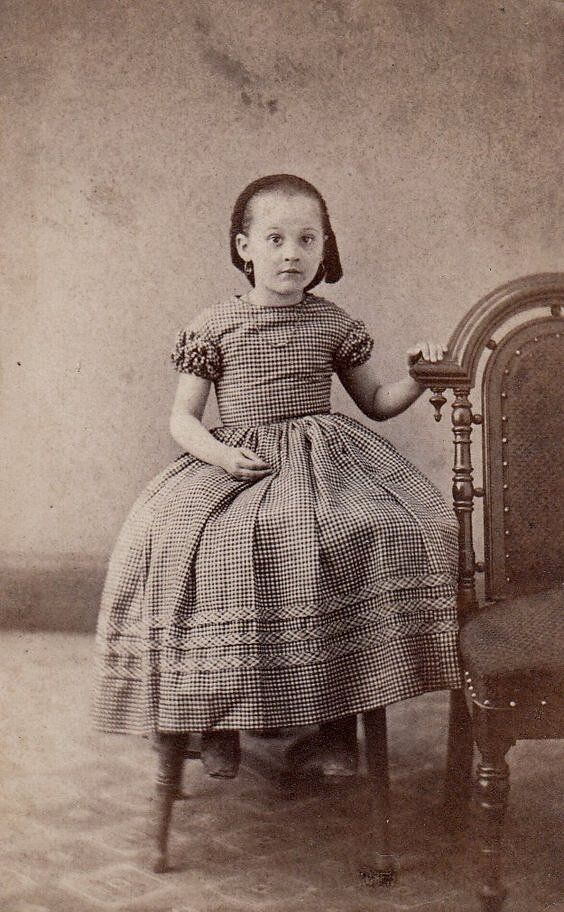Votes for Women! Early Edwardian Suffragist Ensemble
/To celebrate the 100th anniversary of the passage of the 19th Amendment, which gave American women the right to vote*, I met up with some sister suffragettes for a Commemorative Votes for Women March in my hometown of Bloomington, Indiana. The event was put on by the Monroe County Historical Society and it was a nice turnout of mainly women, a few men and one newborn baby (otherwise, I may have been the youngest person in attendance!) in their white, purple and gold. Our mile walk through town yielded lots of thumbs up and photo ops and it was a fun way to spend a Saturday morning.
Here’s what I wore…
My hat and blouse are part of the same costume I posted to my blog earlier this summer. The blouse is from a 1903 reproduction pattern from Truly Victorian and I upcycled a vintage dress I had hanging in my garage, unworn for years. I’m so pleased with the project and how the blouse really looks like it came from the turn of the century. Once I had plans to dress up for the march, I decided I should go for an all white outfit, which many suffragists wore for their marches in the early 1900s. I created the skirt using another Truly Victorian pattern, also from 1903, with two layers of lightweight white cotton (the top being a super sheer muslin from Burnley & Trowbridge). The top is pin tucked to echo the tucks of the blouse.
The star of the show is my reproduction VOTES FOR WOMEN sash, which I made of cotton and used fabric markers for the writing. I used the tutorial from Susanna French (she has an etsy store for premade sashes too!)
I also wore some antique jewelry and a pair of reproduction Edwardian ‘Mae’ heels from American Duchess. I don’t think I’ve ever felt more comfortable or confident wearing a costume in public (outside of Halloween), so maybe I’m getting the hang of this whole costumer thing? I may even wear my sash again on Election Day, this time with a modern outfit. Women before me fought so hard to play a role in our democracy and I do not take it for granted. There’s still work to be done, and by voting for people committed to equality, we can get our country back on track. Please take the time to research your local and state elections (especially your school boards!) to find candidates with views that mirror your own.
*Women of color and indigenous people continued to face voting discrimination for decades afterwards until the Voting Rights Act of 1965 was passed. I really encourage everyone to do their own homework on voting rights (here’s a good article) and not take your current privilege for granted. You can check your voting status or register to vote at Vote.org.

